Some services always run in Windows background to keep your computer running optimally. However, some services like Module Installer Worker can run to a point where it has high CPU usage. This is an issue that needs to be addressed ASAP; otherwise, it can take a toll on your PC’s performance. Moreover, your files and configurations can be corrupted due to a faulty CPU which is caused by high usage. To avoid collateral damage to your system, you have to do a quick fix of Windows Modules Installer Worker having High CPU usage. Here we have an article that matches the solution you are looking for.
Contents
What is Windows Modules Installer Worker?
Particularly connected to the Windows Update service, the Windows Modules Installer Worker Manages the installation, alterations, and removal of Windows updates. This service runs in the background, continuously checking for updates so that your computer always has the most recent fixes and enhancements. The purpose of this automated procedure is to keep system performance and security intact without the need for human intervention.
On occasion, though, users might observe that the Windows Modules Installer Worker is using up a lot of memory and CPU, which can result in a decline in system performance. The service is frequently actively looking for, downloading, or installing updates when it uses a lot of resources. Although this is a typical aspect of how it works, it can occasionally cause issues, particularly if the process is ongoing or unnaturally drawn out.
Users can take a few actions to address the Windows Modules Installer Worker’s high resource usage. In order to eliminate potentially corrupted update files, these options include setting the service’s startup type to manual, terminating the TiWorker.exe process in Task Manager, erasing the SoftwareDistribution folder, performing a System File Checker (SFC) scan to fix corrupted system files, and, as a last resort, resetting the computer. While maintaining effective update management, these steps can help lessen the impact on system performance.
Method 1: Put Windows Installer as Manual
Your computer’s performance may suffer as a result of excessive CPU usage from the Windows Modules Installer Worker. Rather than completely disabling it, it is advised to switch its startup type to Manual. If you disable the service, Windows may not install updates, which leaves your computer open to security risks. Therefore, you can reduce power consumption without sacrificing security by changing the service to Manual.
The steps below can be used to convert the Windows Modules Installer Worker to Manual:
- Running the dialog box is your first move and it is done by pressing the Windows key + R.
- Type services.msc and click OK to launch Windows Services.
- Look for Modules Installer Worker in the Services list. This can be accomplished by either pressing ‘W’ to go to services that begin with ‘W’ or by scrolling through the list.
- Double-click the service, or right-click and choose Properties from the Windows Modules Installer Worker menu.
- Locate the Startup type dropdown menu in the Properties window.
- Pick a Manual to make the said changes.
You can stop the Windows Modules Installer Worker from starting automatically and using up system resources by setting it to Manual. But, keep in mind that you should manually check for Windows updates once a week or once a month to make sure your system is safe and up to date. This method maximizes your computer’s efficiency and high CPU usage of the module.
Method 2: End the process of Tiworker.exe
Terminating the TiWorker.exe process can be a useful workaround for high CPU usage. If changing the Windows Modules Installer Worker to Manual doesn’t solve the issue, try this method. The Windows Modules Installer’s TiWorker.exe occasionally uses excessive resources even with the manual setting. This process can be stopped right away to relieve CPU pressure.
To stop the TiWorker.exe process, follow these steps:
- From the menu, choose Task Manager after right-clicking the Start button. The same will happen by pressing Ctrl + Shift + Esc.
- To see every process that is currently running, select the Details tab in the Task Manager window.
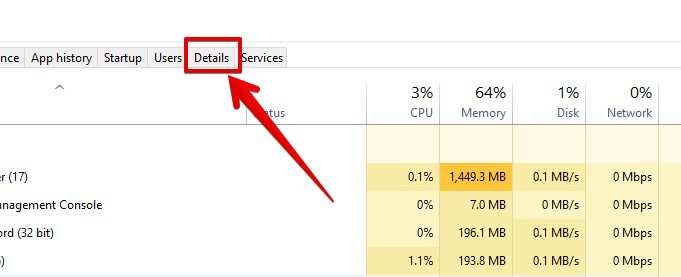
- Locate TiWorker.exe by scrolling through the list. Once found, use the context menu to select the End task by doing a right-click on it.
By terminating the TiWorker.exe process, CPU utilization is momentarily decreased but it is only a stopgap solution. Later on, the process might restart, particularly if Windows tries to update or the system has rebooted. To keep the system stable and secure, manually look for updates and update it, if there is one.
Method 3: Remove SoftwareDistribution folder
The Windows Modules Installer Worker’s high CPU usage can be fixed by deleting the SoftwareDistribution folder. Often, these problems are caused by corrupted update files that are kept in this folder. To remove the folder, take these actions:
- Input services.msc by pressing Windows + R, then hit Enter.
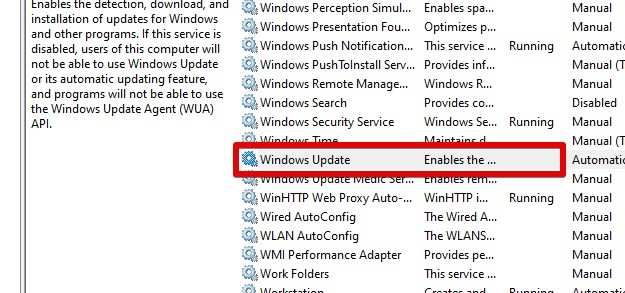
- Scroll till you find Windows Update and stop it by doing a right click.
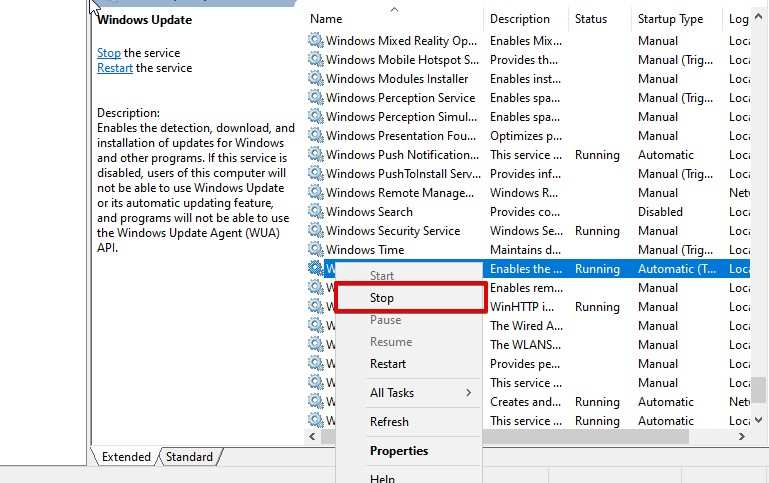
- Once more, launch the Run dialog, enter C:\Windows\, and select OK.
- Locate the SoftwareDistribution folder and remove it.
By removing corrupted update files, this technique may be able to address excessive CPU usage. Examine additional troubleshooting techniques if the problem continues.
Method 4: Run system scan
One workaround for high CPU usage brought on by the Windows Modules Installer Worker is to use the System File Checker (SFC) tool to perform a full system scan. The SFC tool looks for and fixes corrupted system files that could be the problem, including important DLL files. Performing an SFC scan is as follows
- In the search bar, type “command prompt” to open the Start menu. Do right-click on cmd and open it via administrator.
- Enter the command “sfc /scannow” into the Prompt and pressEnter.
Your system files will be thoroughly scanned by this command. It may take up to fifteen minutes to finish the process, so patience is needed. During the scan, the SFC tool will automatically identify and fix any missing or corrupted system files.
After the scan, check the problem again and see if it has been fixed. By making sure all system files are present and functioning correctly, performing this scan can frequently solve the issue. If the problem continues, more troubleshooting measures might be required.
By making use of the SFC tool, you can make sure that your system files are in good shape, which can greatly enhance computer performance and address the Windows Modules Installer Worker’s high CPU usage.
Method 5: Reset PC
Resetting your computer can be a useful fix if you’ve tried every other way to address the Windows Modules Installer Worker’s high CPU usage. This procedure returns your system to factory settings and may resolve the problem. To reset your computer, take these steps:
- In the Windows search bar, type “Reset this PC” and select “Open.”
- In the “Reset this PC” field, select “Reset PC.”
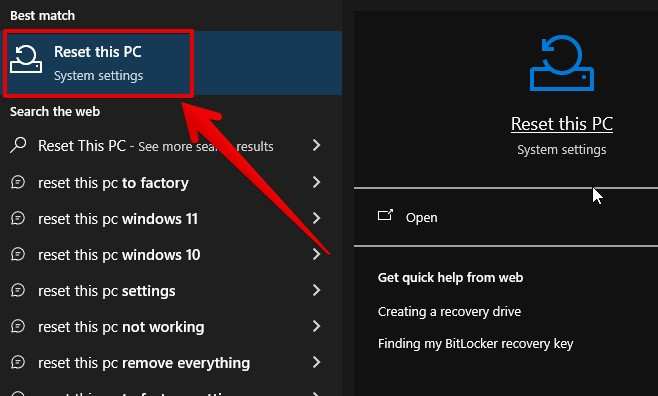
- If you want to keep your own files, choose “Keep my files“.
- Proceed with “Local reinstall.” Choose “Cloud download” if you experience problems with this option (make sure your device is connected to the internet).
- Select “Change settings.” and tweak the settings as per your preference.
- Make the changes that satisfy you and click “Next.”
- In the event that a notification appears, click “Next” to continue.
- To find out which apps will be removed, click “View apps that will be removed”. Keep in mind that you may need to reinstall some apps from the internet or install discs if you are unable to do so through the Microsoft Store.
- Press “Back” to proceed.
- Choose “Reset” to initiate the process of reinstallation. The reset will finish, and your device will restart.
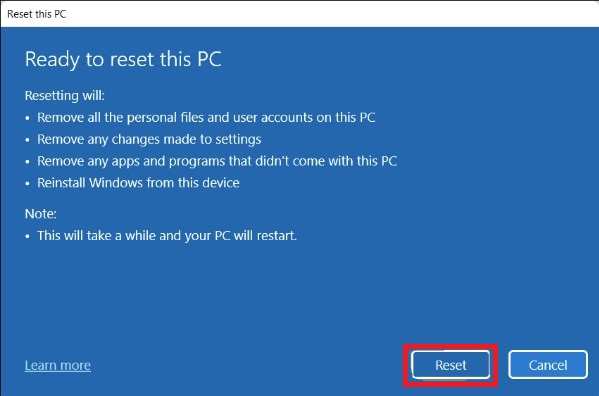
Your personal files will remain unaltered as this process fixes persistent system problems, such as the Windows Modules Installer Worker’s excessive CPU usage.
Conclusion
There are a few efficient ways to address the Windows Modules Installer Worker’s excessive CPU usage. Putting the startup behavior as manual is your first method which can solve the issue. To temporarily relieve CPU strain, terminate the TiWorker.exe process in Task Manager if the problem continues. Possible corrupt update files can also be eliminated by deleting the SoftwareDistribution folder. Corrupted system files that may be the source of the issue can be fixed by running a System File Checker (SFC) scan. Finally, if you select the right options, resetting your computer can return it to a clean state and fix recurring problems while protecting your personal files. These instructions will help you control and lower the Windows Modules Installer Worker’s excessive CPU usage, improving system stability and performance.



